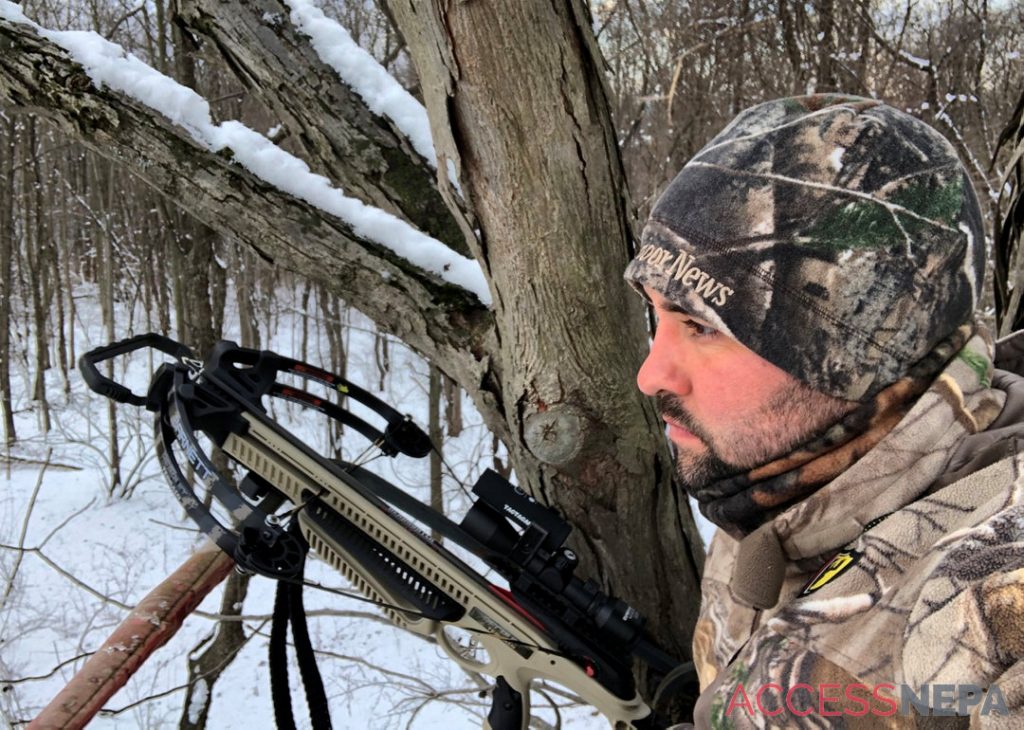BY TYLER FRANTZ
The countdown has begun on the final chapter of the statewide late archery and flintlock deer seasons, which conclude 30 minutes after sundown Jan. 18. With the final dwindling minutes of legal shooting light, so too will fade the opportunity to harvest a last-chance whitetail.
For those who have yet to seal the deal, are simply looking to add another deer to the freezer — or perhaps take a deer to donate to Hunters Sharing the Harvest, the week ahead is an important one. And they would be wise to do everything within their power to find success, including making some last-minute adjustments for late season.
Leftover deer that remain have seen a lot of hunting pressure over the past three months and are more wary and difficult to hunt. But it is possible to lay your tag on a buck or doe, even in January, if you carefully consider how best to hunt them this late in the season.
As a reminder to anyone possessing a muzzleloader permit, an antlerless deer may be taken by flintlock with either a valid antlerless tag for their chosen hunting area or an unused Pennsylvania antlered deer tag, which is good for either a buck or doe statewide. Those toting archery equipment can only take an antlerless deer with a valid antlerless license for the appropriate wildlife management unit or simply take a buck with an unfilled antlered deer tag, but unlike flintlock hunters, archers may not use an unused antlered tag on an antlerless deer.
Of course, fewer bucks are sporting headgear this late in the game — and a buck must have antlers, as well as meet additional size requirements, to use the antlered deer tag. If you shoot a male deer with no antlers, or even a button buck, it is considered an antlerless deer and should be tagged accordingly.
Be sure to consult your “2020-21 PA Hunting & Trapping Digest” online or in print for additional regulations pertaining to antler restrictions, legal harvest and tagging requirements.
One of the most effective places to target late-season deer is over high interest food sources, especially in the evening hours. This could be in a clearing of exposed vegetation, the remnants of a high yield oak flat, or most likely, in an agricultural field littered with waste grain, turnips and other forage brassicas, or even cool season legumes. Get in there well before sunset — early afternoon if possible — and stake out the food source as deer will likely begin to congregate there prior to dusk. Their winter survival depends on calorie intake, so use that to your advantage.
Hunting over the salad bar can be tricky, as barren treetops expose every movement. Sounds seem amplified too without the dampening effects of foliage, making creaky metal tree stands not only somewhat uncomfortable in cold temperatures, but an added liability if you’re not overly cautious about movement.
That’s why I generally opt to use a crossbow over my compound bow in late season, eliminating the need to stand and complete the entire draw cycle, which risks giving away my position with both sound and movement. Both a crossbow and flintlock can be shot from the seated position with minimal movement, making them more efficient choices later in the year, especially with the added bulk of cold-weather garments.
It is important to dress for the occasion, opting for warm, quiet and weather-proof options. Avoid anything with a “swishy” shell that makes unnecessary abrasive noise, but instead lean toward fleece or wool, which both are ideal for long late-season sits, as they offer a thermal insulating quality that is breathable while staving off moisture and wind.
As an undergarment base layer, choose moisture-wicking nylon and polyester, and wear plenty of layers that can be added or removed as the winter elements and your body temperature dictate. Pay close attention to your extremities as these are the first to get cold.
Cover your head, wear warm socks in insulated boots, choose good gloves and add a neck gaiter or facemask. These additions will go a long way in helping you stick it out for the duration.
For those lacking the mental toughness, patience or ambition to endure a late-season stand, success can be had by making well-executed deer drives. Organize a group of hunters to take turns walking through bedding cover while others take post on suspected escape trails with standers facing the wind while drivers walk with the wind at their backs for best results.
As deer approach, do your best to stop them with an audible vocalization rather than taking a shot at a moving deer. This is more ethical and usually leads to a higher-percentage shot, which is appreciated with limited time left on the clock.
Be prepared to field dress the deer, making sure you have a sharp knife, rubber gloves, a baggie with cleanup materials, a zip-tie for attaching your tag and a sturdy drag rope. Don’t forget to take a photo of your harvest to keep as a constant reminder of the year you waited until the last week to fill your tag.
Every deer is a trophy, but late-season leftovers are a special accomplishment — and all the more appreciated as the window of opportunity closes.
Frantz is board chairman for the Pennsylvania Outdoor Writers Association. Contact the writer: outdoors@republicanherald.com




